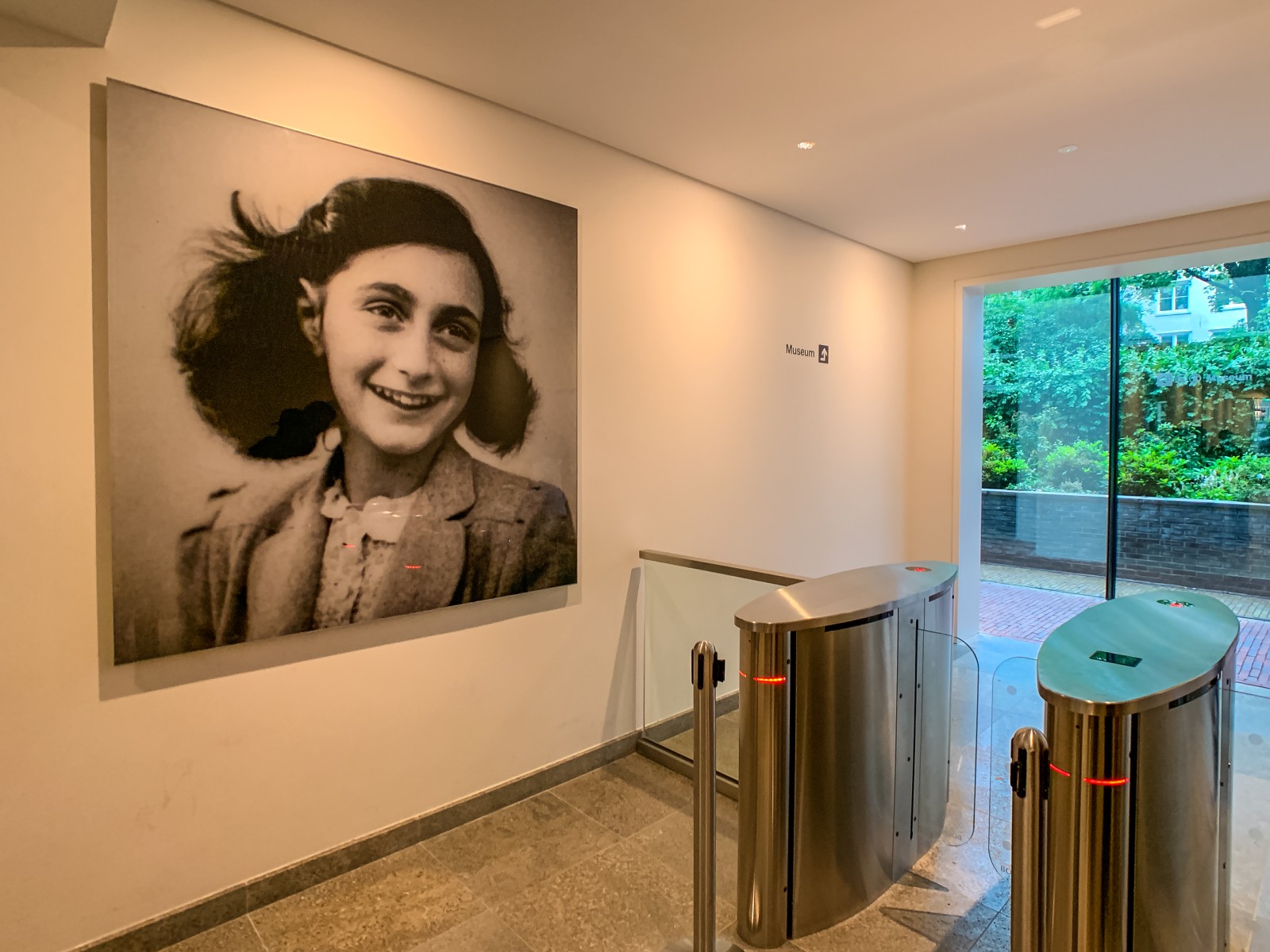
Have you ever thought about what it would be like to walk in the footsteps of history’s most emblematic figures? Join me on this itinerary in Amsterdam as we retrace the places of Anne Frank’s life.
Itinerary in Amsterdam: discovering Anne Frank’s places
1. FIRST STOP: ANNA FRANK’S NEIGHBOURHOOD
Our journey begins in the neighbourhood where Anne Frank lived from 1934 to 1942, at 37 Merwedeplein. Here, a young Anne spent her formative years and the first part of her story took place.
Not far away, a statue of Anna gazes longingly at her old house, reminding us that 1942 was the year her life changed forever.
The fact that Anne Frank’s diary has come down to us is due to Miep Gies, friend and colleague of Otto Frank, Anne’s father. It was she who kept the Frank family hidden for two years and who, shortly after the family’s arrest, found Anne’s diary and kept it in a drawer in her home without reading it. When Otto Frank returned to Amsterdam (the only survivor of the family) Miep gave it to her and it was immediately clear that it was to be shared with the world.
2. SECOND STAGE: ANNA FRANK’S HOUSE
The heart of the Anne Frank discovery tour is of course ‘The Anne Frank House’. This secret place, where Anne and her family hid for two years, has become a symbol of resistance and hope. Here, the past seems to touch the present, offering visitors a profound reflection on history.
Inside the small house that housed Anna and her family, there are still personal belongings, marks carved into the wall to measure her height, and the famous bookcase that was actually the doorway to the secret hiding place.
On 4 August 1944, Anne was deported with her family to a concentration camp from which she never returned.
The Anne Frank House is one of the most visited museums in Amsterdam, and everyone is impressed by this place and the story of this young girl who left the pages of her diary to spread a dramatic page of our recent history.
3. STAGE THREE: THE JEWISH HERITAGE OF AMSTERDAM
Amsterdam has a Jewish heritage to explore and discover.
A visit to the Joods Historisch Museum in the Jewish quarter of Jodenbuurt is a must as it offers an overview of the history of Judaism in Amsterdam.
The Joods Historisch Museum consists of four synagogues dating from the 17th and 18th centuries. The history and culture of the Jewish community are told in five exhibition rooms, one of which is dedicated to children. The itinerary develops a narrative that, from religious objects to the works of Jewish artists, from audio-visual testimonies to portraits and historical documents, traces the vicissitudes of a community.
Finally, don’t forget to take a look at the Portuguese Synagogue next to the museum. A building that miraculously remained intact during World War II bombings and is now one of the largest synagogues in the world.
There is not only Anne Frank in Amsterdam. Etty Hillesum, a young Dutch girl like Anne, also wrote a diary to recount her experiences during the Nazi occupation. Her diary, titled in Dutch Het Verstoorde leven (‘The Disrupted Life’, translated into Italian as ‘Diary 1941-1943’), recounts what happened to her life between 1941 and 1943, when she too was deported to Auschwitz, where she died.
Today, Etty Hillesum’s house, the building at Gabriel Metsustraat 6 in the centre of Amsterdam, is at risk of being demolished to make way for a new building plan, erasing an important piece of the city’s historical heritage.

